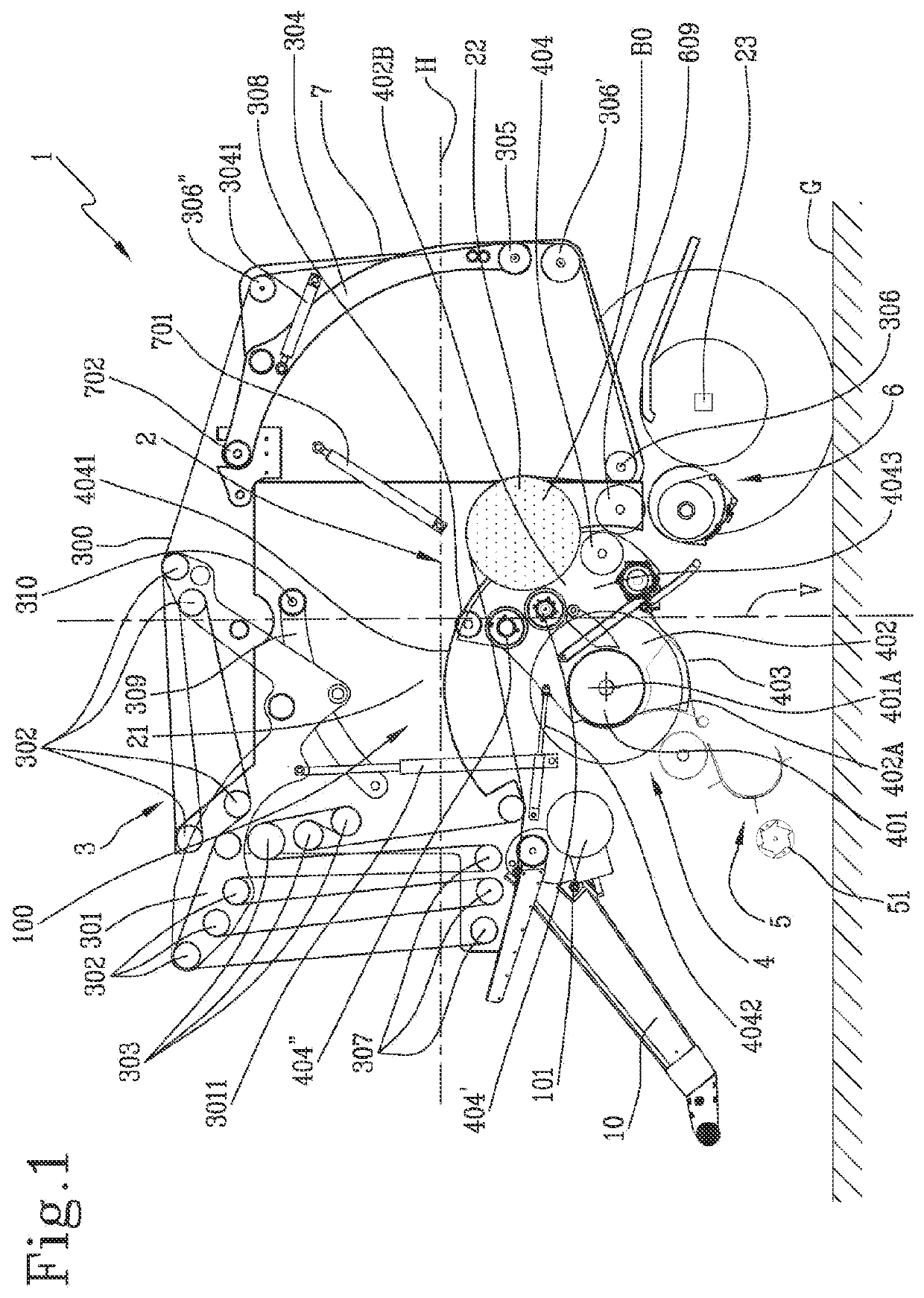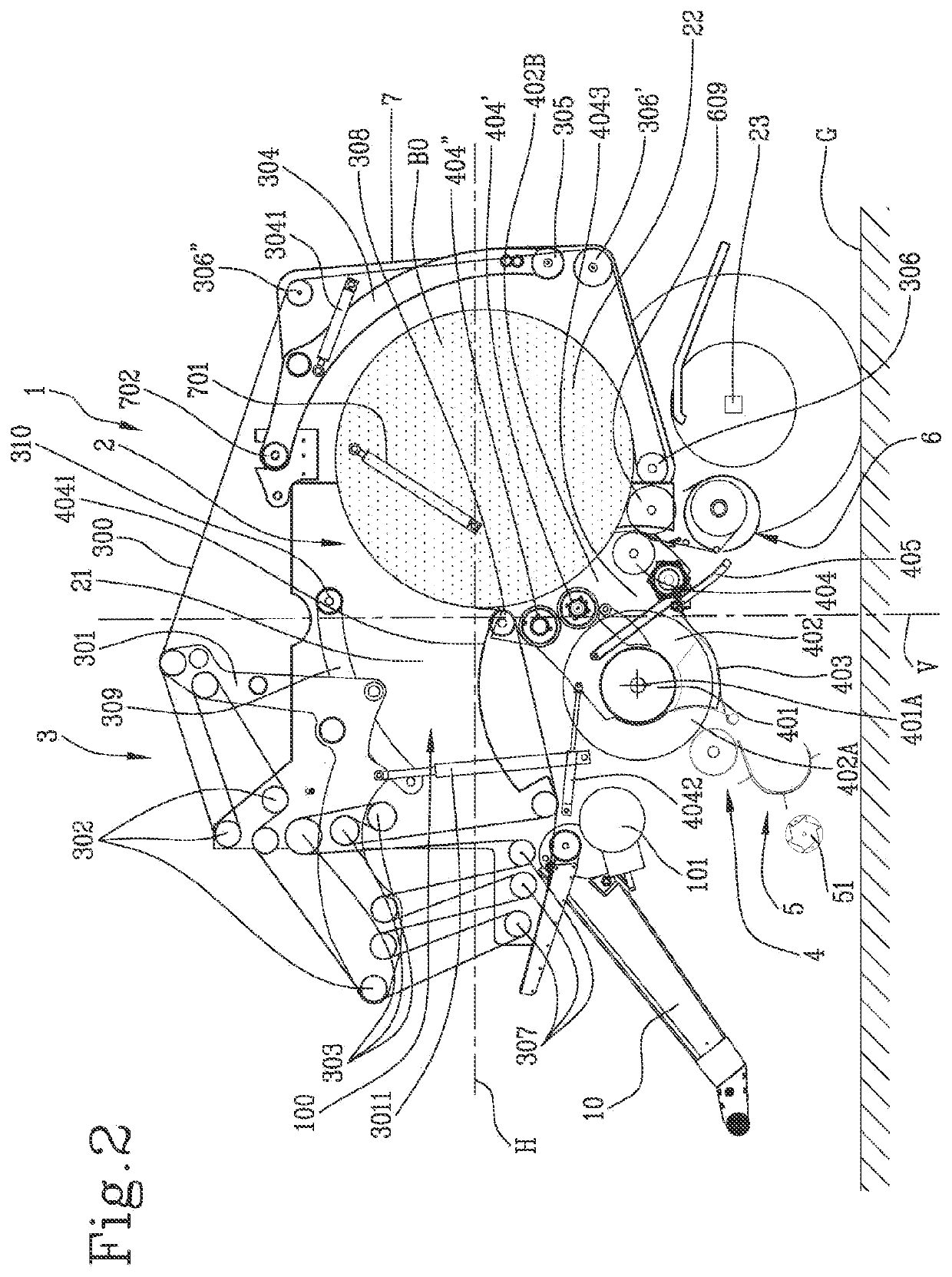Baler connectable to a tractor and method
a technology of connecting bales and tractor, which is applied in the field of balers, can solve the problems of wasting time, affecting the operation of driving the tractor, and affecting the quality of bales,
- Summary
- Abstract
- Description
- Claims
- Application Information
AI Technical Summary
Benefits of technology
Problems solved by technology
Method used
Image
Examples
Embodiment Construction
[0107]With reference to the accompanying drawings, the numeral 1 denotes a baler, according to the present disclosure.
[0108]The baler 1 includes a tongue 10 connectable to a tractor. The tongue 10 is configured to allow the tractor to tow the baler 1.
[0109]The baler 1 comprises a drive shaft. The drive shaft, in an embodiment, is a cardan shaft. The baler 1 includes a gearbox 101. The drive shaft is configured to transmit mechanical rotation from a motor of the tractor to the baler 1, through the gearbox 101.
[0110]The baler 1 comprises a frame 100 including a baling chamber 2. The frame 100 surrounds the baling chamber 2. The baling chamber includes a first part 21 and a second part 22. The baling chamber 2 is configured for receiving crops to form a bale B.
[0111]The baler 1 comprises a wheel axle 23; the frame 100 is supported on the wheel axle 23.
[0112]The baler 1 comprises a conveying assembly 3. The conveying assembly 3 includes a belt 300.
[0113]The conveying assembly 3 includes...
PUM
 Login to view more
Login to view more Abstract
Description
Claims
Application Information
 Login to view more
Login to view more - R&D Engineer
- R&D Manager
- IP Professional
- Industry Leading Data Capabilities
- Powerful AI technology
- Patent DNA Extraction
Browse by: Latest US Patents, China's latest patents, Technical Efficacy Thesaurus, Application Domain, Technology Topic.
© 2024 PatSnap. All rights reserved.Legal|Privacy policy|Modern Slavery Act Transparency Statement|Sitemap



